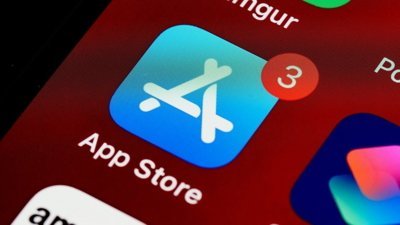Majority of non-iPhone owners wowed by handset's video features
Apple's recently-released iPhone is a likely catalyst for growth in mobile video usage, according to a recent mark study from Interpret which found that nearly three quarters of non-iPhone owners immediately gained interest in the handset after watching a short demonstration of its widescreen video playback capabilities.
Researchers at Interpret say the study shows that it’s not the consumers who are different, but rather it’s the iPhone. Prior to buying the Apple handset, few owners had watched video on their previous cell phones, the firm said. In particular, only 17 percent said they had watched YouTube clips, while 21 percent said they watched a music video, 16 percent reported watching the news, and 15 percent had watched a movie trailer.
"Apple has already made a name for itself as a top destination for music and video on-the- go, and consumers expect the iPhone to deliver on that reputation," said Jason Kramer, Chief Strategy Officer, Interpret. "Consumers want to watch video on their cell phones, but they have high expectations for the experience. The iPhone shows consumers that the potential is there to meet or exceed their expectations for mobile video."
The study also foreshadows what could be considered an iPhone 'halo effect' for mobile video. Initially, one-quarter or fewer non-iPhone owners reported being interested in watching various video media on a mobile phone device. But after seeing a 2-minute video about watching video on the iPhone, that percentage ballooned to nearly three-quarters (73 percent), with 42 percent indicating they were "extremely" or "very" interested.
The iPhone's widescreen video capability is clearly a compelling selling point for the handset, according to Interpret's study, as 50 percent of non-owners who are open to buying the device said that seeing the iPhone’s video capabilities made them more interested in buying one.
"What’s surprising is how wide open the market for mobile video is right now," said Kramer. "The iPhone is definitely raising consumer awareness, but there are other players to watch, like Verizon and LG’s VX9400 Mobile TV phone. Consumers are remarkably open to who delivers mobile content to them.â€
A majority of both iPhone owners and non-owners are reported to consider carriers, broadcast and cable networks, movie studios, and Internet portals as appropriate sources for mobile video. However, iPhone owners and non-owners appear to have different expectations as to who will provide their mobile entertainment . Nearly 75 percent of iPhone users said they expect to get their video content from iTunes (compared to 43 percent of non-owners), and 46 percent of non-owners expect to get it from their cable or satellite company (compared to 37 percent of iPhone owners).
Interestingly, the survey also found that 66 percent of iPhone owners and 73 percent of non-owners said they prefer to watch content for free via an ad-supported model. At the same time, one-third of iPhone owners (34 percent) surveyed would consider a monthly subscription model (compared to only 21 percent of non-owners) and 28 percent would consider pay-per-download (compared to only 20 percent of non-owners).
"In order to fully capitalize on the opportunity for mobile video, Apple and its competitors will need to move beyond a pay-per-download business model,†said Michael Dowling, Interpret’s CEO. "Consumers are used to an ad-supported model for video, and are open to a wide range of advertising if companies like Apple can deliver on the user experience."
Interpret's iPhone study was conducted Friday-Tuesday (July 6-10, 2007) from a nationally-representative sample of cell phone users ages 13-64. To obtain a representative sample of iPhone owners, the firm said potential respondents were randomly chosen from four major online research panels and data was statistically adjusted for survey response bias.
 Prince McLean
Prince McLean











 William Gallagher
William Gallagher

 Malcolm Owen
Malcolm Owen
 Christine McKee
Christine McKee

 Amber Neely
Amber Neely









